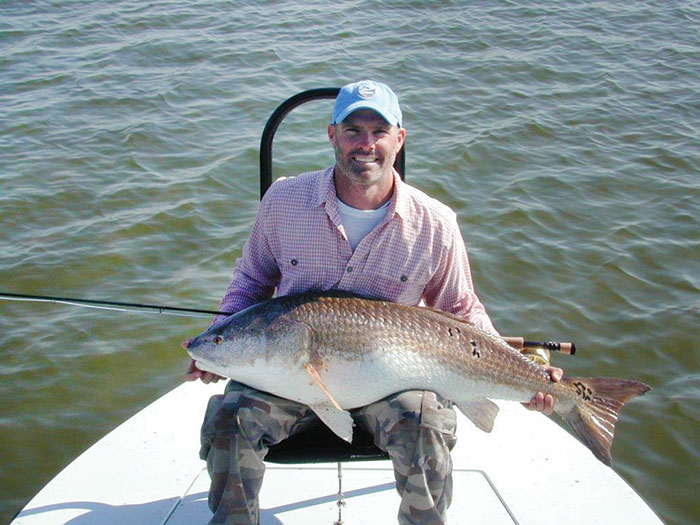
It is well-known that the double haul and the back cast are essential for fly fishing for redfish. Here are three more types of casting I believe are very important when targeting winter reds with a fly.
Fly Repositioning Cast –
This cast is wonderful when you need to recast a fly to a redfish that refused it or when you missed your target. It works best when 20 or more feet of line are outside the tip-top. It is essential to the success of this cast to not rush picking the fly line up off the water.
The key is to load for the back cast by beginning with the rod tip close to the water and slowly lifting the line off the water. Then wait to feel the rod load on the back cast. Once you feel the rod load, make a forward cast, allowing the fly to hit the mark. I’ve witnessed far too many fishermen rush to recast, and in doing so, miss their target on the second cast.
The Quick-Cast For The Short Game –
When sight casting, you will need to execute some short, quick accurate casts. The short cast is one of the most difficult types of casting to make because a fly rod made for short casting has really yet to have been built.
When red fishing, unless I know I’ll be making long casts, I keep roughly 40 feet of fly line stripped into a line management basket (a bucket if fishing from a skiff) and 20 feet of line outside the fly rod’s tip-top. The first 15 feet of the belly section of the line will easily load the fly rod with minimal false casting. Place the fly between the index finger and thumb of the hand not holding the rod. If a redfish is spotted at close range, make a backcast while at the same time releasing the fly from your hand and cast to the redfish.
Master The Cross-Wind Cast –
The wind blows where redfish live. The most difficult winds to a fly flinger are the cross-wind and the following wind. Both are guaranteed to give the angler fits.
The best cast for these challenging situations is the Belgian cast, a very quick cast that when executed correctly presents the fly under challenging conditions. The key is to make an extended side-armed back cast, followed by a high extended-arm overhead cast that will provide the angler distance when working in a big wind. A word of caution: The side cast may produce the painful problem of a fly embedded in the angler if the wind is blowing toward the casting arm.
Put It To The Test –
When targeting winter redfish, the fly angler will be presented with many different casting situations depending on weather conditions. It’s important to understand and execute each of the casting techniques discussed. Once mastered, a trophy redfish is only a cast away!